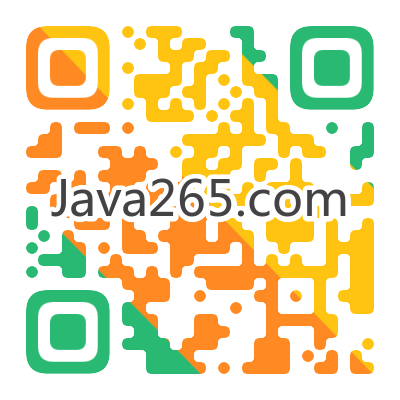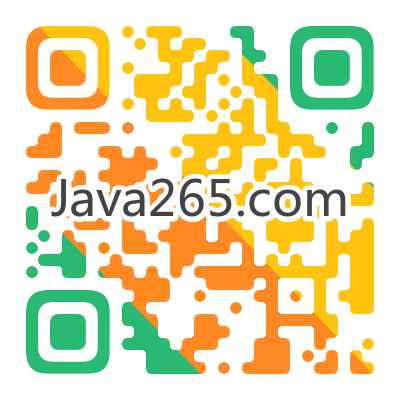FastJson之JSONObject常用方法简介说明
下文笔者讲述FastJson中JSONObject常用方法简介说明,如下u宋史
JSONObject简介说明
JSONobject是FastJson提供的对象
里面提供了大量的静态方法
方便我们对JSON对象进行处理
如下所示
JSONObject使用方法
1.引入相应的依赖 <dependency> <groupId>com.alibaba</groupId> <artifactId>fastjson</artifactId> <version>1.2.48</version> </dependency> 2.即可使用相应的方法
JSONObject中常见的方法
| 方法名 | 备注 |
| put(String key, Object value)方法 | 在JSONObject对象中设置键值对在,在进行设值得时候,key是唯一的,如果用相同的key不断设值得时候,保留后面的值。 |
| Object get(String key) | 通过key值获取JSONObject对象中对应的value值,获取到的值是Object类型,需要手动转化为需要的数据类型 |
| int size() | 获取JSONObject对象中键值对的数量 |
| boolean isEmpty() | 判断该JSONObject对象是否为空 |
| containsKey(Object key) | 判断是否有需要的key值 |
| boolean containsValue(Object value) | 判断是否有需要的value值 |
| JSONObject getJSONObject(String key) | 如果JSONObjct对象中的value是一个JSONObject对象,即根据key获取对应的JSONObject对象; |
| JSONArray getJSONArray(String key) | 如果JSONObject对象中的value是一个JSONObject数组,既根据key获取对应的JSONObject数组; |
| Object remove(Object key) | 根据key清除某一个键值对 |
| Set<String> keySet() | 获取JSONObject中的key,并将其放入Set集合中 |
| Set<Map.Entry<String, Object>> entrySet() | 在循环遍历时使用,取得是键和值的映射关系,Entry就是Map接口中的内部接口 |
| toJSONString() /toString() | 将JSONObject对象转换为json的字符串 |
JSONObject相应的示例
public static void main(String[] args) {
//新建JSONObject对象
JSONObject object1 = new JSONObject();
//1.在JSONObject对象中放入键值对
object1.put("name", "java265.com");
object1.put("name1", "java我最爱的语言");
object1.put("name2", "java我的最爱");
//2.根据key获取value
String name = (String) object1.get("name");
System.out.println(name);
//3.获取JSONObject中的键值对个数
int size = object1.size();
System.out.println(size);
//4.判断是否为空
boolean result = object1.isEmpty();
System.out.println(result);
//5.是否包含对应的key值,包含返回true,不包含返回false
boolean isContainsKeyResult = object1.containsKey("name");
System.out.println(isContainsKeyResult);
//6.是否包含对应的value值,包含返回true,不包含返回false
boolean isContainsValueResult = object1.containsValue("王五");
System.out.println(isContainsValueResult);
//7.JSONObjct对象中的value是一个JSONObject对象,即根据key获取对应的JSONObject对象;
JSONObject object2 = new JSONObject();
//将jsonobject对象作为value进行设置
object2.put("student1", object1);
JSONObject student =object2.getJSONObject("student1");
System.out.println(student);
//8.如果JSONObject对象中的value是一个JSONObject数组,既根据key获取对应的JSONObject数组;
JSONObject objectArray = new JSONObject();
//创建JSONArray数组
JSONArray jsonArray = new JSONArray();
//在JSONArray数组设值:jsonArray.add(int index, Object value);
jsonArray.add(0, "this is a jsonArray value");
jsonArray.add(1, "another jsonArray value");
objectArray.put("testArray", jsonArray);
//获取JSONObject对象中的JSONArray数组
JSONArray jsonArray2 = objectArray.getJSONArray("testArray");
System.out.println(jsonArray2);
//9.remove.根据key移除JSONObject对象中的某个键值对
object1.remove("name");
System.out.println(object1);
//10.取得JSONObject对象中key的集合
Set<String> keySet= object1.keySet();
for (String key : keySet) {
System.out.print(" "+key);
}
System.out.println();
//11.取得JSONObject对象中的键和值的映射关系
Set<Map.Entry<String, Object>> entrySet = object1.entrySet();
for (Entry<String, Object> entry : entrySet) {
System.out.println(entry);
}
//12.转换为json字符串
String str1 = object1.toJSONString();
System.out.println(str1);
String str2 =object1.toString();
System.out.println(str2);
}
版权声明
本文仅代表作者观点,不代表本站立场。
本文系作者授权发表,未经许可,不得转载。









